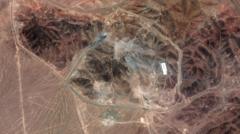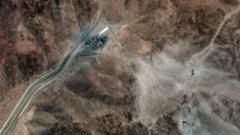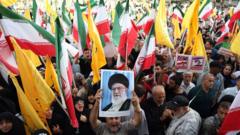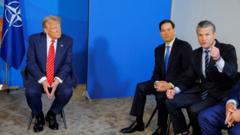**As Ayatollah Khamenei contemplates emerging from hiding, Iran grapples with devastation and public anger, signaling a pivotal moment for the regime's future.**
**Khamenei's Potential Return: A Nation on Edge Amidst Destruction**
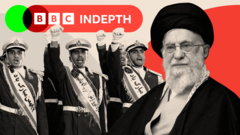
**Khamenei's Potential Return: A Nation on Edge Amidst Destruction**
**The Iranian Supreme Leader faces a fragile landscape shaped by war and dissent.**
In the wake of a bitter conflict with Israel, Ayatollah Ali Khamenei, Iran's Supreme Leader, is contemplating a cautious return to the public eye after weeks in hiding. The ongoing ceasefire, brokered by both UAE and US officials, provides a temporary reprieve, yet uncertainty looms over his potential reemergence. His absence has given rise to whispers of dissent among top officials, indicating internal unrest within the regime.
Khamenei's leadership, which started in 1989, is now being scrutinized as evidence of significant damage during the war emerges. Israeli forces have reportedly targeted and degraded various military installations, curtailing Iran's capability. This deterioration raises questions about Khamenei's strategic decisions, especially as his pursuit of nuclear power appeared to backfire, exacerbating international sanctions and economic difficulty for the Iranian populace.
Public sentiment against Khamenei and the ruling elite has grown, particularly as many Iranians perceive the leadership as responsible for their suffering. Anger towards the regime's failures and military ambitions has gained traction among citizens. While some remnants of solidarity among citizens have emerged during the bombardment, concerns exist that the regime may lash out at its own people as it faces increasing challenges.
Among scholars, predictions about the regime’s stability abound. Some believe that the Iranian leadership is at a tipping point where significant internal change could occur, while others forecast an increase in authoritarian measures. The prospect of comprehensive regime change appears fueled by growing public discontent, yet many fear such a transition would not come without further chaos.
As Khamenei contemplates his next steps amidst a complex geopolitical landscape, he must navigate the dangers posed by external threats and internal discord. While military weaknesses have been documented, including enduring ballistic missile capabilities hidden beneath Iranian soil, the regime's future hinges on its ability to quell public anger and reassert control. The stage is set for significant developments, with the pathway forward remaining fraught with uncertainty for both Khamenei and the Iranian people.
Khamenei's leadership, which started in 1989, is now being scrutinized as evidence of significant damage during the war emerges. Israeli forces have reportedly targeted and degraded various military installations, curtailing Iran's capability. This deterioration raises questions about Khamenei's strategic decisions, especially as his pursuit of nuclear power appeared to backfire, exacerbating international sanctions and economic difficulty for the Iranian populace.
Public sentiment against Khamenei and the ruling elite has grown, particularly as many Iranians perceive the leadership as responsible for their suffering. Anger towards the regime's failures and military ambitions has gained traction among citizens. While some remnants of solidarity among citizens have emerged during the bombardment, concerns exist that the regime may lash out at its own people as it faces increasing challenges.
Among scholars, predictions about the regime’s stability abound. Some believe that the Iranian leadership is at a tipping point where significant internal change could occur, while others forecast an increase in authoritarian measures. The prospect of comprehensive regime change appears fueled by growing public discontent, yet many fear such a transition would not come without further chaos.
As Khamenei contemplates his next steps amidst a complex geopolitical landscape, he must navigate the dangers posed by external threats and internal discord. While military weaknesses have been documented, including enduring ballistic missile capabilities hidden beneath Iranian soil, the regime's future hinges on its ability to quell public anger and reassert control. The stage is set for significant developments, with the pathway forward remaining fraught with uncertainty for both Khamenei and the Iranian people.




